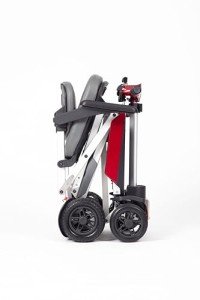Understanding Mobility Aids: Enhancing Independence and Quality of Life
As society continues to age and individuals significantly look for methods to preserve self-reliance, the need for mobility aids has actually never been more significant. Mobility aids, which incorporate a variety of devices designed to help individuals with walking or walking around, play a crucial function in promoting mobility, improving safety, and improving general quality of life. folding mobility scooters with lights will explore the different kinds of mobility aids, their advantages, considerations for selection, and address some often asked questions.
Types of Mobility Aids
Various mobility aids are readily available, each created to deal with specific needs. The following table summarizes a few of the most typical kinds of mobility aids and their features.
| Kind Of Mobility Aid | Description | Best Suited For | Key Features |
|---|---|---|---|
| Walking canes | A portable stick offering assistance and balance. | People who need very little help. | Light-weight, portable, adjustable height. |
| Walkers | Four-legged frames offering stability. | Those needing significant support while walking. | Foldable, some with wheels, added security features. |
| Rollators | Wheeled walkers with a seat for resting. | Individuals needing mobility with the option to rest. | Brakes, baskets for individual items, adjustable height. |
| Wheelchairs | Chairs with wheels for people with restricted mobility. | Those not able to walk or requiring substantial support. | Handbook or powered options, personalized seating. |
| Scooters | Motorized devices for bigger ranges. | Individuals with restricted stamina however requiring independence. | Various sizes and designs, often transportable. |
| Crutches | Support devices positioned under the arms or lower arms. | People recovering from lower limb injuries. | Adjustable, lightweight, requires upper body strength. |
| Stairlifts | Mechanical devices for moving between floorings. | Users facing difficulties in multi-level homes. | Customizable for different staircases, automated. |
Advantages of Mobility Aids
Mobility aids offer a variety of benefits that can significantly enhance the lives of individuals facing mobility challenges. Some significant advantages include:
- Increased Independence: Mobility aids empower individuals to move freely without relying on others for assistance, thereby enhancing their confidence and self-esteem.
- Improved Safety: Using mobility aids can reduce the danger of falls and injuries, specifically for older adults or those with balance problems.
- Enhanced Quality of Life: By facilitating mobility, people can engage in social activities, go to occasions, and enjoy life more totally, contributing to much better psychological and psychological health.
- Rehabilitation Support: After surgical treatment or injury, mobility aids offer needed assistance and stability, assisting in healing and rehabilitation processes.
- Accessibility: Many mobility aids are created to be used both indoors and outdoors, making sure that individuals can browse different environments with ease.
Aspects to Consider When Choosing Mobility Aids
Choosing the suitable mobility help needs cautious factor to consider of several aspects, consisting of:
| Factor | Factors to consider |
|---|---|
| User's Needs | Assess the level of mobility required; consider whether the user requires short-lived or long-lasting support. |
| Physical Limitations | Examine the user's strength, balance, and coordination to figure out the best type of aid. |
| Setting | Think about the primary environments where the help will be utilized, such as home, outdoors, or specific surfaces. |
| Weight and Portability | Ensure that the picked device is manageable relating to transportability and storage, specifically for outdoor usage. |
| Budget | Mobility aids can be found in a variety of rates; consider insurance protection and available funding alternatives. |
| Adjustability | Select aids that can be adjusted for height and convenience to accommodate development or altering requirements. |
Frequently Asked Questions About Mobility Aids
1. How do I know if I need a mobility aid?
Many aspects can signal the need for a mobility aid, such as problem strolling or stabilizing, tiredness while standing, or a current surgical treatment affecting mobility. Consulting with a health care professional can provide guidance tailored to specific requirements.
2. What kinds of mobility aids are covered by insurance?
Coverage varies in between insurers, but a lot of supply alternatives for resilient medical equipment, which usually consists of wheelchairs, walkers, and some types of walking sticks. Consult your insurance company for specific protection information.
3. Can mobility aids be used outdoors?
Yes, many contemporary mobility aids are developed for outside use. Rollators, scooters, and some walkers are equipped with features for stability and ease of usage on different terrain.
4. How do I maintain my mobility aid?
Regular maintenance involves looking for any wear and tear, guaranteeing that parts such as wheels, brakes, and frames are functioning properly, and cleaning up the devices as needed. Following the producer's guidelines is essential for security.
5. Exists a danger of becoming dependent on mobility aids?
While some users may end up being reliant on mobility aids, they are created to promote independence and mobility. Gradually utilizing a mobility aid can enhance confidence and assistance retain physical strength and coordination.
Mobility aids are indispensable tools that empower individuals to overcome physical difficulties, promoting independence and improving lifestyle. By understanding the numerous types of mobility aids readily available, their benefits, and essential aspects for factor to consider, families and caregivers can make informed decisions that best satisfy the needs of their liked ones. With the right assistance, those with mobility difficulties can lead satisfying and active lives, totally free to explore the world around them.

